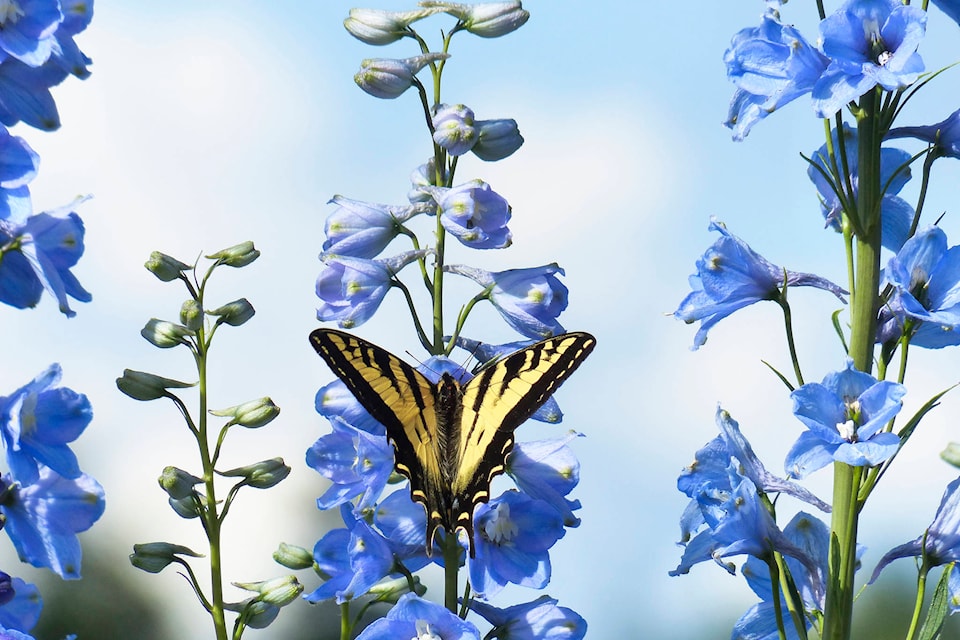Leslie Cox
Special to The Record
Somewhere in recent history, I came across mention of the veratrum plant. This is one of our native plants, likely more well-known to many readers by its common name, Indian hellebore.
While I cannot recall where I read about the plant, I do remember two vivid points. The shape and texture of the leaves are stunning and the plant thrives in shade. (Indeed, you can see this plant in the forested area of Paradise Meadows on Mt. Washington.)
However, a third fact about Indian hellebore gave me pause. All parts of the plant are extremely toxic. Ingesting even a small piece will render one unconscious and ultimately end in death.
The eternal question: should we introduce toxic plants into our garden design when we have children and pets?
Before you answer that question, let me ask you another. Do you have daffodils, cyclamen, daisies, heather, delphinium, love-in-a-mist, periwinkle, clematis, wisteria, Japanese pieris or rhododendrons planted in your garden? At least some of the parts of these plants are toxic in varying degrees if ingested. And this list is by no means complete. There are many more ornamental plant species that are toxic, and it does not stop there.
Do you have a fig tree? Its milky sap contains phytochemicals, which can cause painful skin inflammations when affected areas are exposed to sunlight. Giant hogweed, poinsettia, and spurges… to name a few… also contain phytochemicals. Granted, you will not die from exposure to their sap, but the consequences are nonetheless painful and can be long-lasting.
And what about the tomatoes, peppers, eggplants and potatoes in your vegetable garden or greenhouse? Parts of these plants are toxic to people and pets. But do we stop growing them? Of course not. The rewards from eating fresh, homegrown fruits are well worth the potential danger.
So, going back to the Indian hellebore, delphiniums, clematis, rhodos and all the other toxic plants… does our visual enjoyment from these plants outweigh the toxic danger? John and I think so because we have many of the plants on the Canadian Poisonous Plant list in our garden. We also have a dog and grandchildren.
So how to keep them safe in our garden? Starting with our dog - the only things Sadie has eaten of her own volition in our garden is grass, strawberries and kiwi. She will also eat kale and peas when they are offered to her, although I have caught her helping herself to a nibble of kale on occasion. None of our other dogs have ever helped themselves to anything in the garden but then Sadie is our first canine “foodie.” And so far, she has not come to any harm. She seems to know on instinct what plants to stay away from.
However, the same cannot be said for children. As all parents know, they get into positively everything, so to keep them safe requires due diligence on our part to educate them.
John and I have made a point of instilling one golden rule into our children and grandchildren: Do not touch or put anything in your mouth without first asking if it is safe.
And this rule has stood the test of time for us. The children have all thrived and the youngest grandchildren are beginning to obey our golden rule. Hint: if you are struggling to keep plant material out of your children’s mouths and need to get the weeding done, give them a shovel and container and turn them loose in the compost pile. A little soil ingestion never hurt anyone. They say it is very good for the brain.
Want to see our garden? We are open Fridays, Saturdays and Sundays from 10 a.m. to 4 p.m. or by appointment. Dates are noted on my website: duchessofdirt.ca
Leslie Cox co-owns Growing Concern Cottage Garden in Black Creek. Her column appears every second Thursday in the Record throughout the spring and summer months.
